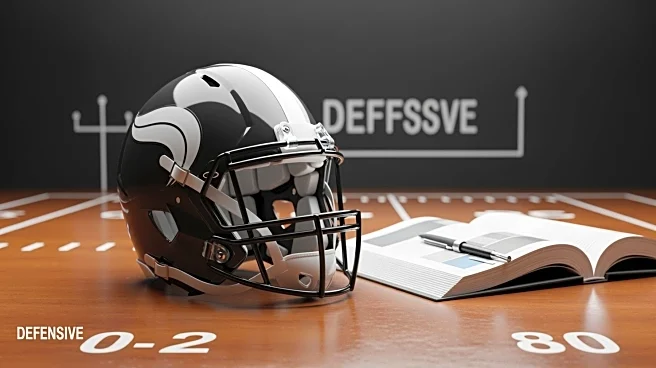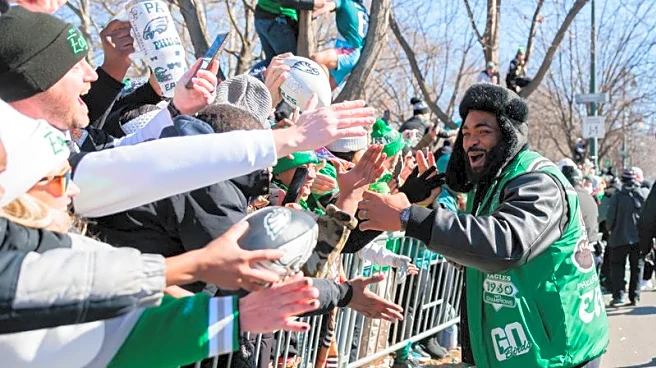What's Happening?
Brandon Graham, the longest-tenured player in Philadelphia Eagles history, has decided to come out of retirement and rejoin the team. The Eagles announced that Graham has agreed to a one-year deal, marking his 16th season with the franchise. Graham expressed
excitement about his return, stating he has 'no expectations' and is eager to contribute to the team. His comeback follows the sudden retirement of Za'Darius Smith, who led the Eagles' edge group with 1.5 sacks. The Eagles have faced challenges at the edge rusher position due to injuries, including Nolan Smith Jr. and Ogbo Okoronkwo, both placed on injured reserve. Graham, 37, previously returned from a torn triceps muscle to play in last season's Super Bowl, helping the Eagles secure their second championship.
Why It's Important?
Graham's return is significant for the Eagles as they seek to bolster their defensive line amidst injuries and retirements. His experience and leadership are expected to add depth and energy to the team, which is crucial as they aim to maintain their competitive edge in the NFL. Graham holds the Eagles' record for most regular-season games played and ranks third in franchise history for career sacks. His presence could help stabilize the defense and provide mentorship to younger players, enhancing the team's overall performance.
What's Next?
With Graham back on the roster, the Eagles will look to integrate him into their defensive strategy, potentially in a rotational role to maximize his impact while managing his workload. The team is preparing for their upcoming games, including a rematch against the New York Giants. Graham's return may also influence the Eagles' decisions in the trade market as they assess their needs at the edge rusher position. The team is hopeful that his leadership and experience will contribute positively to their season.
Beyond the Headlines
Graham's decision to return highlights the emotional and strategic considerations athletes face regarding retirement and career longevity. His comeback underscores the value of veteran players in providing stability and leadership within a team. The move also reflects the dynamic nature of NFL rosters, where injuries and retirements can prompt unexpected changes and opportunities.














